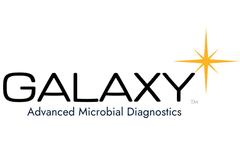Immune Function Articles & Analysis
35 articles found
Central Nervous System APIs address neurological and psychiatric conditions by modulating neurotransmission, receptor function, and neural signaling pathways. This category encompasses antidepressants, antipsychotics, anxiolytics, anticonvulsants, and cognitive enhancers, each designed to cross the blood-brain barrier and interact with specific neural targets. ...
This provides an innate channel and repository for transporting pharmaceuticals. Platelets naturally function as superior drug carriers because of the unique receptors on their surface. ...
In vitro testing involves studying immune responses in controlled laboratory environments using cell cultures. ...
Mouse models play a pivotal role in this field, as their immune system shares many similarities with that of humans. A key aspect of studying the immune system involves analyzing cytokines, chemokines, and growth factors—molecules that regulate immune responses and influence disease progression. The Mouse Luminex Cytokine Assay has emerged ...
Sleep apnea is a sleep disorder that is characterized with snoring and frequent interruptions in breathing, when asleep. That impacts quality sleep and puts the individual at risk of health issues. Though CPAP therapy is considered gold standard in treating sleep apnea, there are a multitude of vitamins and minerals that can help you get better sleep by addressing factors like muscle relaxation ...
In immunological research and drug discovery, it is essential to have reliable tools to study the function of immune receptors and their role in various diseases. Immune receptor stable cell lines are engineered cell lines that have permanently integrated a single type of immune receptor gene into their genome. This allows for ...
To ensure the effectiveness and safety of these antibody drugs, it is necessary to perform activity testing.Definition of Antibody ActivityThe activity of an antibody drug usually refers to its ability to bind to the target antigen and how it affects the target in a biological function, such as neutralizing viruses, killing tumor cells, or regulating immune ...
The Constant Region of an antibody is a part of the immunoglobulin (antibody) molecule, responsible for stabilizing the structure of the antibody to execute its specific immune function. The constant region of an antibody is usually at the bottom of the molecule, close to the tail of the antibody, corresponding to the variable region of the antibody, which is ...
T cells are the most numerous and functionally complex type of lymphocytes, mainly including CD4+ T cells and CD8+ T2 cells, which play an important role in cellular immunity and assist in humoral immune response. ...
Each of these components plays a crucial role in supporting various physiological functions in the human body, and their supplementation can help to fill nutrient gaps and promote overall health. ...
Cytokines not only enhance the expansion and persistence of CAR-T cells, but also enhance their function in immunosuppressive TME. Cytokines, including interleukins, tumor necrosis factor, interferons, chemokines, colony-stimulating factors, growth factors, etc., are involved in the activation, proliferation, differentiation and survival of various immune ...
CD73, also known as ecto-5′-nucleotidase, is a groundbreaking immunoinhibitory protein that assumes a pivotal role in tumor growth and metastasis. Its primary function revolves around converting extracellular ATP into immunosuppressive adenosine, working in tandem with CD39 within normal tissues to curtail excessive immune reactions. ...
Vertebral compression fractures can cause thoracic deformity, abdominal compression, and affect cardiopulmonary function.(3) fragility fracturesFractures that occur non-traumatically or with minor trauma are fragility fractures, such as falls from or below standing height or from other everyday activities. ...
As a protein molecule related to chronic inflammation and immune injury, FGL2 can also promote the occurrence and development of tumors. ...
In this case, using the bispecific antibody helped reduce unexpected toxicity in patients with low levels of HER2 expression. l Selection of antibody size/fragment Most anti-tumor ADCs are based on IgG1 antibodies, partly because these molecules can trigger Fc-mediated immune functions such as ADCC, CDC, and ADCP. However, most ADCs targeting solid tumors have ...
Tumors utilize this and express the binding partner to immune checkpoint molecules; by doing so, they inhibit T cell function when a T-cell recognizes them and hide from the immune system (a phenomenon termed “immune evasion”). Drugs such as the anti PD-1 antibody bind immune checkpoint molecules on T ...
For example, a patient may have a cancerous growth that has not caused any functional organ changes or caused any symptoms visible to others. This is one of the reasons why clinical diagnostic tests are important. ...
The clinical symptoms vary according to the intensity of infection and the immune function of the host. It can manifest as an asymptomatic carrier or a severe disseminated infection, which eventually leads to the death of the host due to multiple organ failure. Autoinfection occurs mainly in immunocompromised humans, monkeys and dogs. Experiments have shown that ...
In contrast, γδ T cells, expressing γδ TCR, are effector cells in the innate immune system, which function in an MHC-unrestricted manner, making them ideal mediators for cancer immunotherapy. ...
N-glycosylation modification is important in protein folding, functional positioning, and intracellular transport. In mammals, N-glycosylation plays a part in regulating embryonic development, cancer occurrence and development, and immune defense. In plants, N-glycosylation is of great significance to many physiological processes such as cell wall formation, ...














